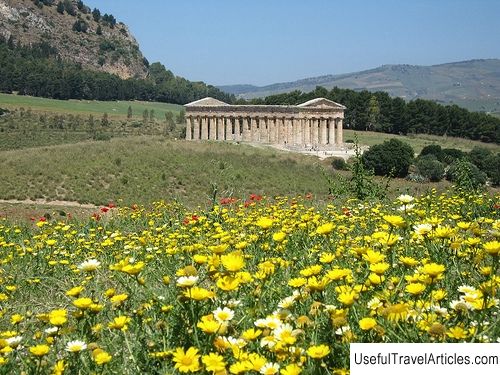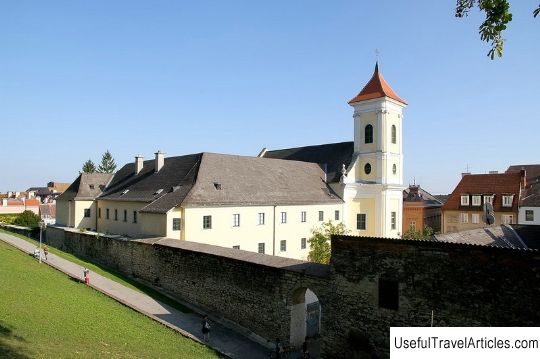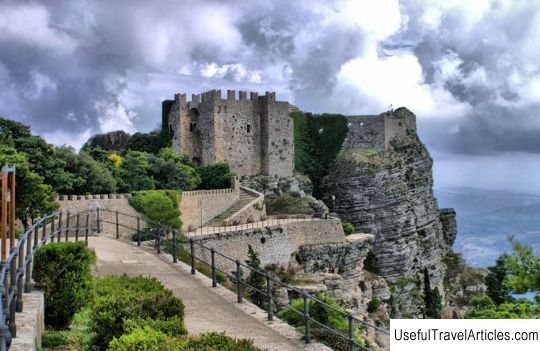Ancient city of Segesta description and photos - Italy: Sicily island
Rating: 8,1/10 (289 votes) 
Segesta antique city description and photos - Italy: Sicily Island. Detailed information about the attraction. Description, photographs and a map showing the nearest significant objects. The name in English is Segesta. Photo and descriptionSegesta is the ancient city of the Elimnes, exiles from Troy. The date of its foundation is not known for certain, but already in the 4th century BC. it was inhabited by people. The Greek historian Thucydides writes about the exiles from Troy who crossed the Mediterranean and landed in Sicily, where they founded the cities of Segesta and Erice. These exiles were called Elimnes. According to the legend, Segesta was founded by a certain Achestes, the son of a noble resident of Troy, Egesta, and the river god Krimisus. From the very first days, Segesta was at war with another ancient Sicilian city - Selinunte. Unidentified city boundaries were the cause of the enmity. The first clash occurred in 580 BC, then Segesta emerged victorious. In 415 BC. the rulers of the city asked for help from Athens in the confrontation with Selinunte, who was supported by Syracuse. The Athenians used this request as a pretext and sent a large army to Sicily, which besieged Syracuse, but suffered a crushing defeat. Clashes between the two cities continued in 409 BC, when Selinunte was besieged and defeated by the Carthaginians, again at the request of Segesta. However, in 307 BC. most of the inhabitants of Segesta were brutally killed or sold into slavery by the tyrant from Syracuse, Agathode, for not providing economic assistance at his request. After this event, Agathode changed the name of the city to Diceopoli, which means “just a city”. In 260 BC, during the First Punic War, Segesta entered into an alliance with the Romans, who defended the city from an attempted Carthaginian conquest. They also granted him the status of a "free city" with significant tax breaks. But already in 104 BC. in Segesta, a slave uprising broke out, which 5 years later literally "drowned in blood" - it was brutally suppressed by the Romans. Finally, in the 5th century, the city was destroyed by vandals, and has never been able to regain its former significance. In its place, only a small settlement remained, in which the Normans built a castle after the expulsion of the Arabs from Sicily. Later, the castle was rebuilt by order of the Zvevi family and became the center of the medieval city. However, it was soon forgotten, and only in 1574 the Dominican historian Tommaso Fadzello, an expert in the field of identifying the ancient cities of Sicily, established its exact location. The territory of present-day Segesta is notable for a majestic temple with almost perfect Doric features. Most likely, the temple was unfinished, since traces of its roof and carvings on the columns have never been found. Perhaps the completion of construction was prevented by the outbreak of war, or the temple was used for ancient rituals. According to another version, the roof was made of wood, and therefore has not survived to this day. It is known for certain that the temple was built at the end of the 5th century BC. on the top of a hill in the place of another building of religious significance. Today, this sanctuary, surrounded by 36 columns, is considered one of the best-preserved examples of ancient architecture. On the opposite side from the temple, also on the top of a hill at an altitude of about 440 meters, there is an amphitheater, built in the middle of the 3rd century BC. The seating area is divided into 7 sections and carved out of marble. Little remains of the scene - according to experts, it was once decorated with columns and pillars. The theater could accommodate up to 3 thousand people.       We also recommend reading Parliament House description and photos - Australia: Melbourne Topic: Ancient city of Segesta description and photos - Italy: Sicily island. |




